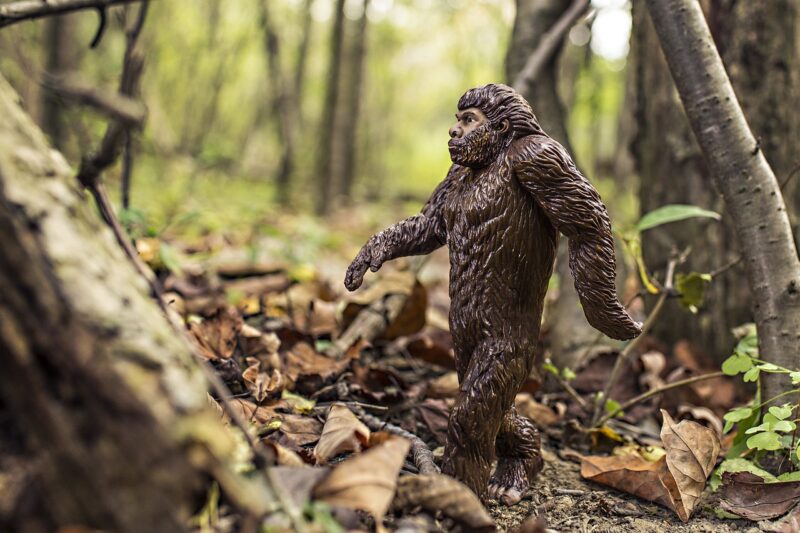Theories About Bigfoot: Sightings, Evidence, and Skepticism
November 15, 2024

Bigfoot, the elusive creature often described as a gigantic, hairy, ape-like being, has fascinated enthusiasts, researchers, and skeptics for decades. Sightings of this mysterious creature have been reported across North America, igniting discussions that blend science, folklore, and human curiosity. In this article, we’ll explore the various theories surrounding Bigfoot, investigate the claims of sightings and evidence, and examine the skepticism that frequently surrounds the phenomenon.
1. The Origins of Bigfoot Lore
The legend of Bigfoot has deep roots in the folklore of various indigenous tribes across North America. Known by different names such as Sasquatch or the Wild Man, these beings were often considered guardians of the forests, featuring in numerous stories and warnings.
The modern conception of Bigfoot began in the late 1950s, largely due to a combination of hoaxes, unsolved sightings, and media sensationalism. The 1967 Patterson-Gimlin film, which purportedly shows a Bigfoot crossing a river in California, is one of the most famous pieces of evidence yet still plagued by controversy. This film kickstarted the modern Bigfoot craze and has inspired countless investigations and documentaries.
2. Notable Sightings Throughout History
Sightings of Bigfoot can be traced back centuries, but there are several key reports that stand out:
– **The 1958 Bluff Creek Incident**: The discovery of large footprints in California gained significant media attention. It was the event that contributed to the creature becoming a household name.
– **The 1973 Mississippi Sightings**: Multiple witnesses reported encounters with a large, hairy creature near the banks of the river, reigniting interest in Bigfoot across the Southern United States.
– **The 2008 Georgia Bigfoot Hoax**: Two men claimed to have discovered a Bigfoot corpse, which was later revealed to be a costume. This incident, while discrediting some claims, also fueled discussion about the ongoing fascination with Bigfoot.
Each of these sightings adds to the tapestry of Bigfoot lore, but they also invite investigation and scrutiny.
3. Scientific Investigations and Evidence
Scientific inquiry into Bigfoot has produced a mixed bag of evidence. While some enthusiasts and researchers swear by the existence of the creature, skepticism remains prevalent.
**Physical Evidence**:
– **Footprints**: Photographic evidence and casts of large footprints circulate among the Bigfoot community. Researchers claim that the details of these prints, including dermal ridges, indicate they are not human. However, many skeptics argue that they could be hoaxes or misidentified animal tracks.
– **Hair and DNA Samples**: Reports of hair samples attributed to Bigfoot have often led to genetic testing. Most have been found to match known animals, leading skeptics to dismiss claims of new species.
– **Audio Recordings**: Sounds allegedly made by Bigfoot have been recorded in various locations. Researchers claim these sounds don’t match any known animal, suggesting the possibility of an undiscovered species. Yet, skeptics state that they may be attributed to familiar wildlife given the right environmental conditions.
Ultimately, the scientific community largely considers existing evidence as insufficient to verify Bigfoot’s existence, leaning instead on biological plausibility and ecological factors.
4. The Psychological Aspect of Believability
The enduring fascination with Bigfoot can also be attributed to psychological factors. The phenomenon of cryptozoology allows individuals to explore the unknown, a desire deeply embedded in human nature.
– **Cognitive Bias**: People often see patterns where none exist, leading to misidentification of wildlife, shadows, or visual distortions as Bigfoot.
– **Group Psychology**: Social dynamics can intensify belief in sightings. Once a community accepts Bigfoot’s existence, narratives are perpetuated within social circles.
– **Myth-making**: In every culture, there exists a tendency to create and share myths that embody national or cultural identity; Bigfoot has become a modern folklore tale resonating with the desire for adventure and exploration.
These factors can shield personal beliefs from scientific scrutiny, nurturing the allure of Bigfoot and its legacy.
5. The Role of Media and Pop Culture
The fascination with Bigfoot has permeated pop culture, leading to a myriad of documentaries, TV shows, and movies that further fuel public interest. Shows like “Finding Bigfoot” and films such as “Harry and the Hendersons” have romanticized the search for the mythical creature, transforming it into a beacon of intrigue for adventurers and skeptics alike.
The continuous portrayal of Bigfoot in media often sensationalizes findings, ultimately overshadowing thorough scientific inquiry with sensationalized tales.
As digital media grows, the speed and reach of these stories have also increased, leading to a cycle of fascination that blurs the lines between fact and fiction.
6. The Current Debate: Believers vs. Skeptics
The debate surrounding Bigfoot is highly polarized. Believers argue that the accumulation of anecdotal evidence, along with persistent sightings, warrant serious investigation into the existence of the creature. They emphasize the expansive wilderness areas that remain unexplored by humans.
Conversely, skeptics contend that no verifiable evidence substantiates the creature’s existence. They point out the absence of hard biological evidence, such as a body, DNA, or other physical remains, and highlight the numerous hoaxes that have surfaced over the years.
This conflict reflects larger discussions about science, belief, and the nature of evidence in our understanding of the world.
Conclusion: The Mystery Persists
Whether you believe in the existence of Bigfoot or regard it as a captivating piece of folklore, the mystery of this legendary creature persists. The various sightings and stories continue to ignite imaginations and provoke discussions about what remains undiscovered in the natural world.
As long as people seek adventure in the wilderness and explore the realms of the unknown, the legend of Bigfoot will endure, blending elements of reality with the allure of mystery. In the rapidly evolving landscape of technology and communication, new evidence—be it real or fabricated—will continue to surface, ensuring that Bigfoot remains an enigma worthy of exploration.
Engaging with this phenomenon opens up broader dialogues about humanity’s relationship with nature, belief systems, and the search for understanding in a world filled with mysteries waiting to be uncovered.






